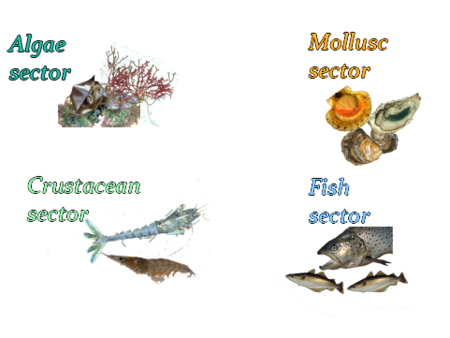Fish sector
Thousands of years ago, in China and in Egypt, fresh water fish farming (Tilapia, carps), preceded the farming of coastal sedentary molluscs. On the contrary, sea water fish farming is much more recent, for the simple reason that the reproduction step and the first steps of the biological cycle are far more difficult to control.
Main steps:
- Fifties : cultivation of jacks from wild juveniles in Japan
- 1960-1980 : major research and development program conducted in Norway on salmon; this led to the production of 4,000 tons in 1980
- End of the sixties : domestication of the Japanese seabream ( Pagrus major)
- Mid-eighties : control of the reproductive cycle of several species such as bass, gilthead seabream and turbot
- Nineties : diffusion to Europe and to the rest of the world of the technology applied to the salmonidae
- 1990-2000 : rapid development of bass and seabream farming in Mediterranean countries
- Since 2000 :
- diversification and spectacular development of Chinese fish farming,
- adaptation of techniques to warm water species such as corb or tropical bass in France.
In half a century, the techniques have thus evolved from the fattening of young marine fish species to the farming of amphihaline species - the production of their juveniles being already well mastered in fresh water - and then to the control of the full cycle of marine species with high commercial value.
The production of salmonidae jumped from about 250,000 tons, mainly in fresh water, in 1984, to 1,500,000 tons in 2000, mainly in seawater ; the production of marine only species increased from about 200,00 to 1,000,000 tons over the same period.
Discover the fish sector - in English - New !
|
animation Flash (572 Ko) |
If you haven't, download Flash plug-in |

